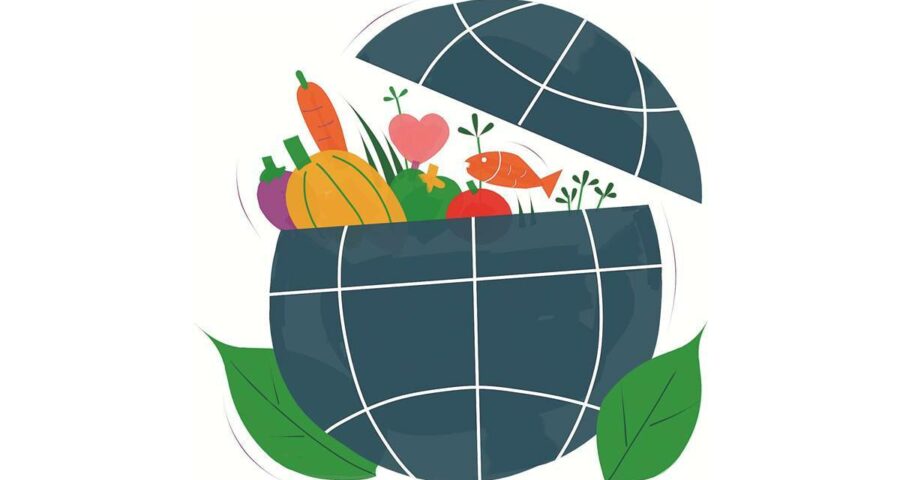S Mahendra Dev writes: The narrative of Indian agriculture has to be changed towards more diversified high-value production, better remunerative prices and farm incomes. It must be inclusive in terms of women and small farmers; it must be nutrition-sensitive, environment friendly and sustainable.
This month, the UN Secretary-General will convene the Food Systems Summit, which aims for a transformation of global food systems in order to achieve the Sustainable Development Goals (SDGs) by 2030. There are five action tracks to achieve the objectives. These are: Ensure access to safe and nutritious food for all; shift to sustainable consumption patterns; boost nature-positive production; advance equitable livelihoods; build resilience to vulnerabilities, shocks and stress. According to the Food and Agriculture Organisation (FAO), “food systems encompass the entire range of actors involved in the production, aggregation, processing, distribution, consumption and disposal of food products that originate from agriculture, forestry or fisheries, and parts of the broader economic, societal and natural environments in which they are embedded”. India also has to transform its food systems, which have to be inclusive and sustainable for higher farm incomes and nutrition security. In this context, it would be useful to look at India’s policies across food systems.
There has been significant progress in the country’s agricultural development since Independence, from a food-deficit country to a country self-sufficient in food. However, the Green Revolution also led to water-logging, soil erosion, groundwater depletion and the unsustainability of agriculture. Current policies are still based on the “deficit” mindset of the 1960s. The procurement, subsidies and water policies are biased towards rice and wheat. Three crops (rice, wheat and sugarcane) corner 75 to 80 per cent of irrigated water. Diversification of cropping patterns towards millets, pulses, oilseeds, horticulture is needed for more equal distribution of water, sustainable and climate-resilient agriculture.
The narrative of Indian agriculture has to be changed towards more diversified high-value production, better remunerative prices and farm incomes. It must be inclusive in terms of women and small farmers; it must be nutrition-sensitive, environment friendly and sustainable.
Small farmers require special support, public goods and links to input and output markets. Many technological and institutional innovations can enable them to increase incomes through diversification, and benefit from value chains. Best institutional practices have to be followed in agricultural marketing. Farmer producer organisations help get better prices for inputs and outputs for small holders. The ITC’s E-Choupal is an example of technology benefiting small farmers. Similarly, women’s empowerment is important particularly for raising incomes and nutrition. Women’s cooperatives and groups like Kudumbashree in Kerala would be helpful. One of the successful examples of a value chain that helped small holders, women and consumers is Amul (Anand Milk Union Ltd) created by Verghese Kurien. Such innovations are needed in other activities of food systems.
Another issue is hunger and malnutrition in India. According to the NFHS-4 survey, around 38 per cent of the country’s children reported stunting in 2015-16. The NFHS-5 shows that under-nutrition has not declined in many states even in 2019-20. Similarly, obesity is also rising. A food systems approach should focus more on the issues of undernutrition and obesity. Safe and healthy diversified diets are needed for sustainable food systems.

The sustainability of food systems is equally important. Estimates show that the food sector emits around 30 per cent of the world’s greenhouse gases. This is going to be crucial in the years to come due to climate change. Sustainability has to be achieved in production, value chains and consumption. Climate-resilient cropping patterns have to be promoted. Instead of giving input subsidies, cash transfers can be given for farmers for sustainable agriculture.
Food systems also need health infrastructure. The Covid-19 pandemic has exposed the weak health infrastructure in countries like India, particularly in rural areas and some regions. Inequalities in health and education have to be reduced for healthy and sustainable food systems. Women’s health indicators need to be improved for better nutrition.
Inclusive food systems need strong social protection programmes. India has long experience in these programmes. Strengthening India’s National Rural Employment Guarantee Act, public distribution system (PDS), nutrition programmes like ICDS, mid-day meal programmes, can improve income, livelihoods and nutrition for the poor and vulnerable groups. In PDS, there is a need to give non-staples like pulses and oils, and biofortified cereals for better nutrition.
Finally, the role of non-agriculture is equally important for sustainable food systems. Some economists like T N Srinivasan argued that the solution for problems in agriculture was in non-agriculture. Therefore, labour-intensive manufacturing and services can reduce pressure on agriculture. Income from agriculture is not sufficient for small holders and informal workers. Strengthening rural MSMEs and food processing is part of the solution. Industry has to help in producing healthy processed food.
To conclude, at the global level, there is a proposal to have an International Panel on Food and Nutritional Security (IPFN) — an “IPCC for food,” similar to the panel on climate change. The UN food systems summit this month is a great opportunity to boost policies for achieving SDGs. Science and technology are important drivers to achieve these goals. India should also aim for a food systems transformation, which can be inclusive and sustainable, ensure growing farm incomes and nutrition security.
This column first appeared in the print edition on September 9, 2021 under the title ‘The future of food’. The writer is director and vice-chancellor, IGIDR, Mumbai
Source: Read Full Article


